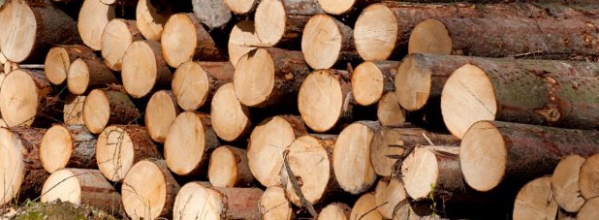

Pulpwood and Wood Fuel Prices in the US SouthJuly 27, 2020 - The 5-year delivered price trends for pulpwood and wood fuel in the US South have demonstrated a considerable amount of volatility. Despite these periods of instability, however, all three products have trended lower since 2015. For softwood/hardwood pulpwood and wood fuel, 2019 represented a point of peak volatility over the 5-year period. This was driven in part by the significant amount of precipitation that the South experienced from 3Q2018-2Q2019. With a major swing in rainfall over the 3-quarter period came an equally sizable swing in wood raw material prices as harvesting operations were constrained by the weather. 
These are important products in the regional forest supply chain; what can we learn from recent price performance? PULPWOOD PRODUCTSYear-Over-YearYear-over-year (YoY), delivered prices for both pine pulpwood and hardwood pulpwood in the US South decreased (2Q2019 to 2Q2020). Delivered pine pulpwood prices reached a 5-year high in 1Q2019 at $34.91 per ton; however, prices quickly dropped just a quarter later. On a YoY basis, pine pulpwood prices were down $1.59 per ton (4.8 percent) to $31.79/ton in 2Q2020 vs. $33.38/ton in 2Q2019. Delivered hardwood pulpwood prices also reached a 5-year high in 1Q2019 at $47.26 per ton, and they too reversed course a quarter later. On a YoY basis, hardwood pulpwood prices were down $6.87 per ton (15.0 percent) to $39.22/ton in 2Q2020 vs. $46.09/ton in 2Q2019. 
Quarter-Over-QuarterQuarter-over-quarter (QoQ), delivered prices for pine pulpwood and hardwood pulpwood in the US South decreased as well (1Q2020 to 2Q2020). Pine pulpwood prices decreased $0.43/ton, or 1.3 percent to $31.79/ton in 2Q2020 vs. $32.22/ton in 1Q2020. Hardwood pulpwood prices decreased $2.77/ton, or 6.6 percent to $39.22 in 2Q2020 vs. $41.99/ton in 1Q2020. H22020 OutlookIn 2H2020, we expect pine pulpwood delivered prices to slowly begin trending higher due to seasonality and an uptick in demand. Prices were suppressed in 2Q due to the extreme uncertainty associated with the COVID-19 pandemic. As a response, the lumber industry instituted widespread curtailments, which cut the supply of residual chips available to the market. But as the economy further opens up and manufacturing comes back online, demand for pine residual chips and pulpwood will increase. Conversely, we expect hardwood pulpwood to continue trending down as it has for the last four quarters as demand has waned. Hardwood pulpwood is largely a byproduct of pine sawtimber harvest activity; as pine sawtimber supply has flattened (or decreased in some areas) in response to deteriorating economic conditions, so too has hardwood pulpwood supply. While this condition historically pushes prices higher, demand for this product in the larger market is trending down. The complete story is available on Forest2Market's blog Forest2Market provides pricing data, supply chain expertise and strategic consulting services to participants in the global wood and fiber supply chain. The Forest2Market's unique databases contain more than 400 million rows of transaction data; they are the foundation for all analytics available in the firm's business intelligence platform, SilvaStat360, as well as client resource studies and consulting engagements. To learn more, visit www.forest2market.com. SOURCE: Forest2Market |